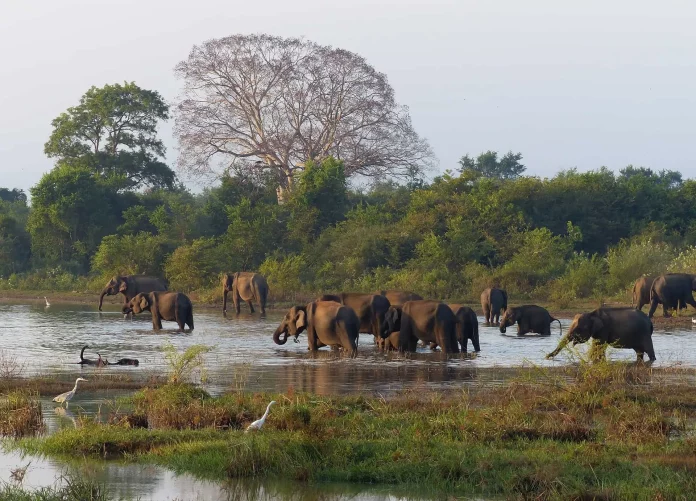Sri Lanka has won worldwide tourist attractions as a paradise for wildlife and natural beauty. So it is not surprising that the wild animals of Sri Lanka are able to attract tourists to Sri Lanka. Among them, Sri Lankan elephants have gained a very special place and elephant-watching tours have been a popular activity in Sri Lanka since time immemorial.
So, in this post, we are going to give you valuable information about elephants in Sri Lanka. Then let’s jump to the article
What Sri Lankan Elephants Are?
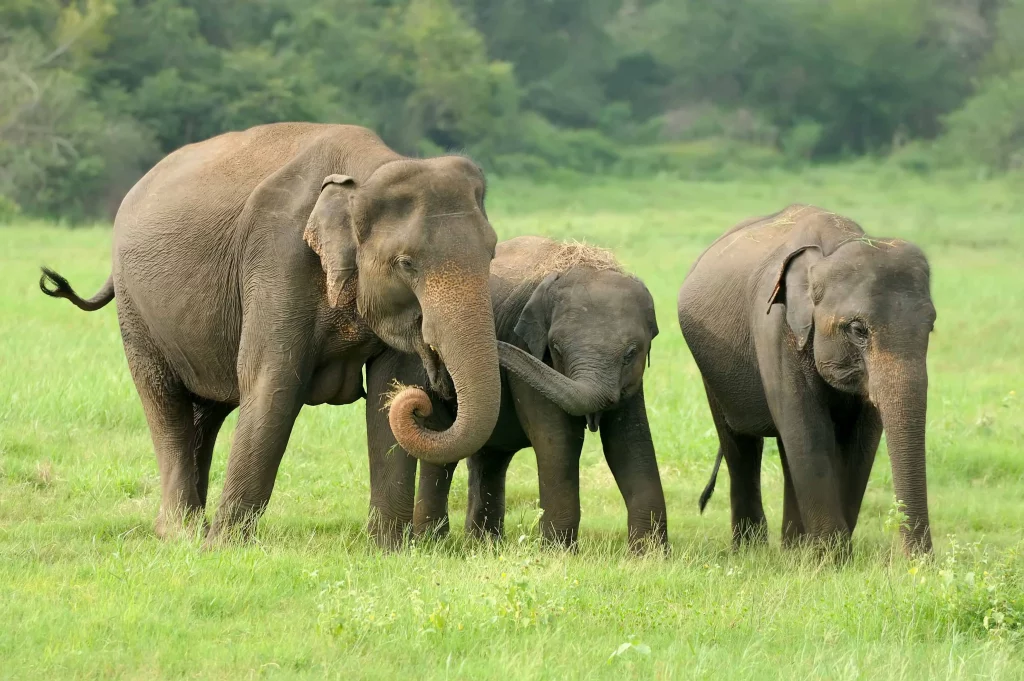
The elephants of Sri Lanka are elephants belonging to a subspecies native to Sri Lanka one of the three subspecies of Asian elephants which live in the Indian continent. They mostly live in the dry zone of Sri Lanka and a small number live in the wet zone and in the mountains.
Elephas maximus Maximus is the name used to Introduce Sri Lankan elephants. Thus, the largest number of this species lives in Sri Lanka and the island has become the country with the highest density of elephants in Asia.
Characteristics
A common feature of Asian elephants is that they are not as big as African elephants. This species is the most intelligent of the other 3 subspecies and their noise is louder than the other species. The tallest part of the body is the top of the head; an average male’s height is only 2.8 m. Females are smaller than males and their average height is about 2.4m. Rarely, do male animals have tusks.
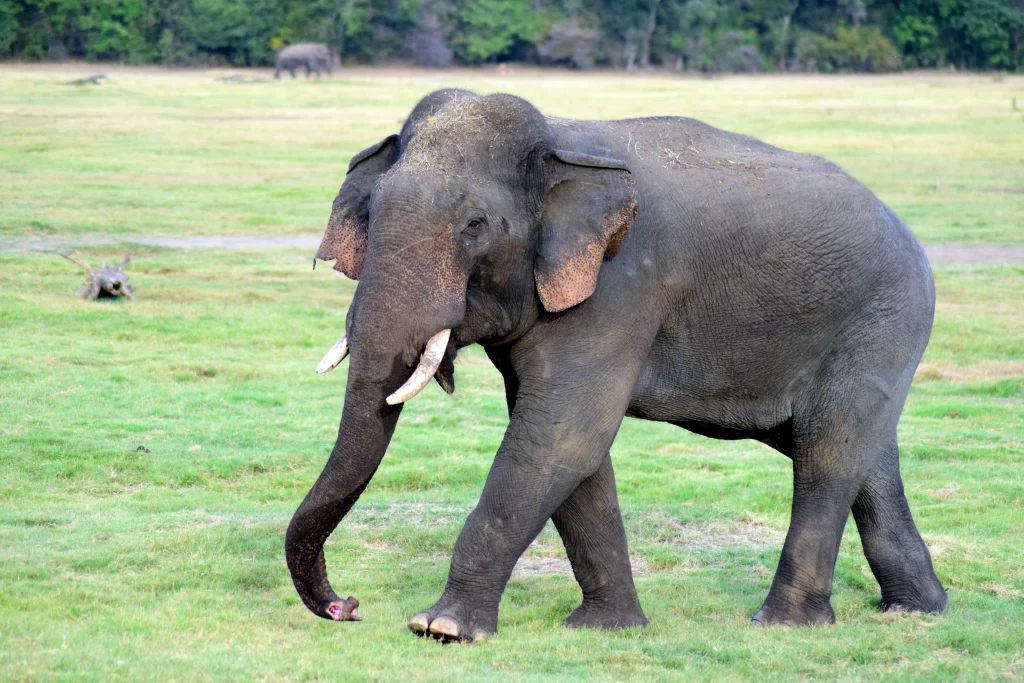
Male and female elephants have very thick skin, which is about 3-4 cm thick. Due to this, the body has been able to be safe even in a very rough forest and face changing weather conditions physically.
The average weight of elephants living in Sri Lanka is about 2000-6000 kg and they eat about 150-170 kg of food per day. They drink about 100-200 liters of water a day.
Elephants in Sri Lanka normally walk about 40 km a day in search of food and water, and the average speed of the elephant is about 6 km per hour. But if needed they can run at a speed of up to 40 Kmph but the distance that can be covered at a speed of 40 Kmph is short.
Habits and Lifestyle
Elephants in Sri Lanka are very social and live in groups of 12-20. The group is led by an older female leader. There are two sub-groups within the grant group namely lactating mothers and their offspring. When the male calves begin to grow into adult elephants, they are separated from the herd, and from then on they live alone in the wild. They are very dangerous mostly when musth periods.
Elephants are common nomads and they live by changing their habitat from time to time. Accordingly, with the onset of the monsoon season to the environment in which they live, they start the migration to a dry region. In this journey, priority is taken by the elder female of the herd, and the rest of the herd follows her. It is the habit of elephants to use the traditional routes that they have been using for a long time. And in this journey, their traditional ways of traveling are taught to future generations.
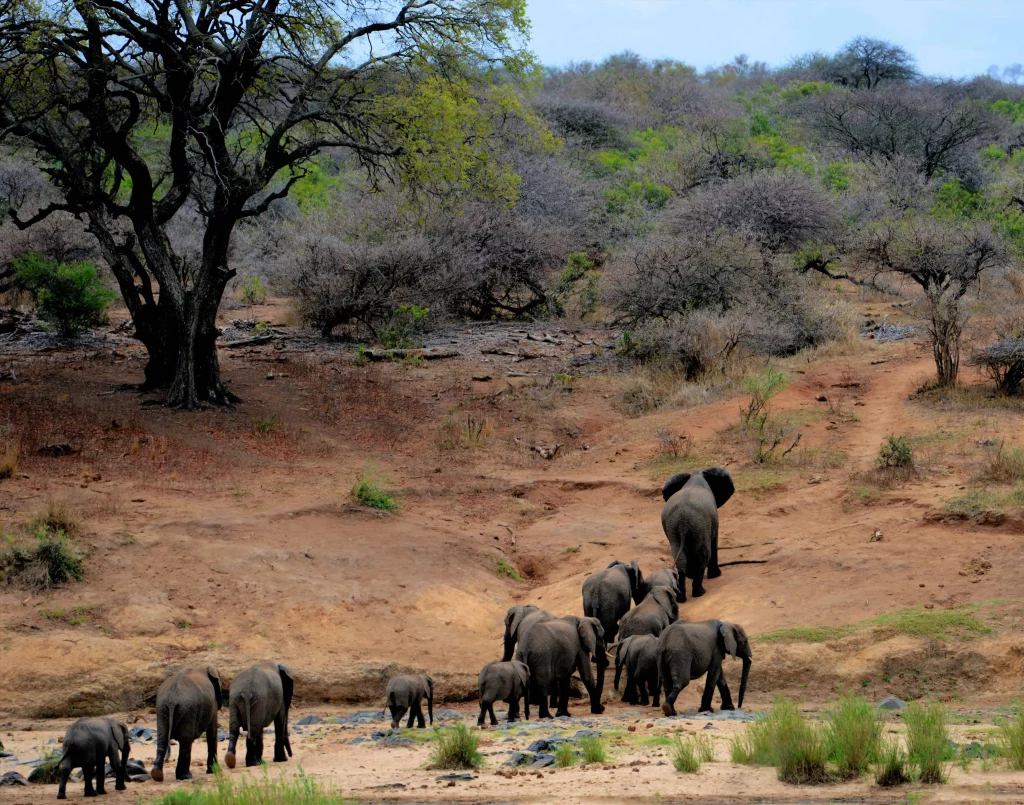
In cases where people have crossed Elephant’s traditional paths and built houses and also Chena cultivation, they go forward destroying those farmings or constructions that obstruct their journey instead of changing their traditional routes. This reason leads humans to conflicts with elephants
Life span
The average life span of Asian elephants is about 80 years and that of African elephants is about 60 years. However, the natural death of elephants is due to not being able to eat. That’s because their teeth don’t stop growing after they are worn out. Usually, this species’ teeth only grow 6 times, but after that, there are no more teeth growing. After the last growing teeth wear out they starve to death.
Diet and Nutrition
As herbivores, elephants mainly consume grass, leaves, shoots, bark, fruits, nuts, seeds, and other vegetation. And for their mineral needs, they eat the soil
Mating Habits
Asian elephants are usually polygamous and these animals can mate at any time of the year. The gestation period is 22 months and these innocents have the longest gestation period. They give birth to a single baby weighing approximately 100 kg, but in very rare cases, they give birth to twins. Recently there has been reported an Elephant twin birth from the Pinnawala elephant orphanage and also from Minneriya National Park. The newborn calf is usually cared for by its mother and other females in the herd.
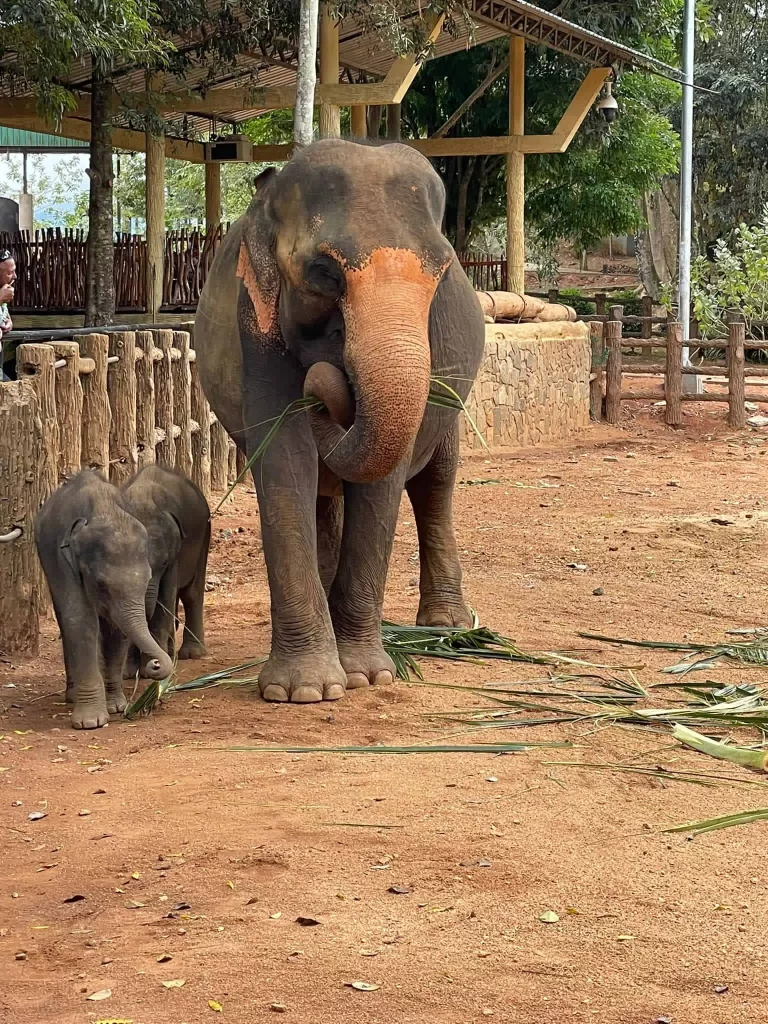
Young calves grow up on milk and are weaned in 2-3 years. The cubs then live with their mothers for up to 5 years, after which they lead an independent life. Males disperse from the adult herd and lead a solitary life, reaching sexual maturity only at the age of 12-15 years. Females continue to live with the herd. Females of this species become sexually mature at the age of 10 years and after giving birth to their first calf, they become pregnant again at intervals of 4-6 years.
Elephant love
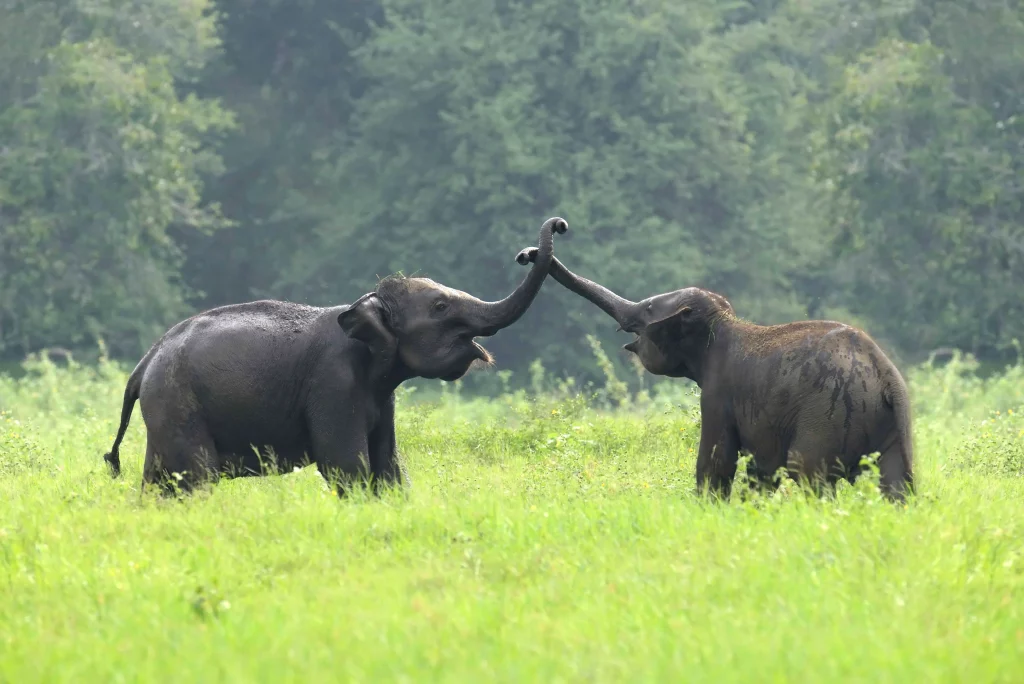
The most beautiful episodes of the life cycle of these innocents are written during their breeding period. That is, during this time, they begin to fall in love. During this time, there are occasions when males fight for a female animal and these fights take place for several days and drag on until one elephant accepts defeat or dies. The winner then wins the female’s heart and they live together from then on.
During this time they walk for miles together in love until the female becomes pregnant. After that, she returns to her group, and the male after that goes back to their usual single life.
Tusker
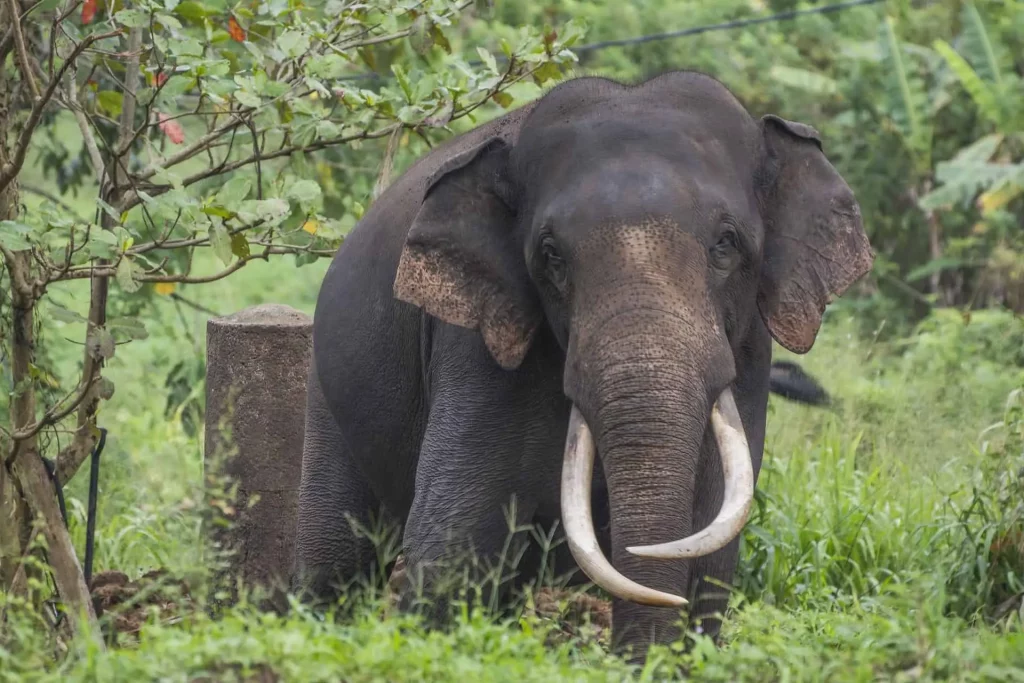
The Tusker is the most distinctive member of the elephant family and has a pair of tusks protruding from its mouth. They are very special because of this pair of tusks, which is rarely found in male Asian elephants. They use this as a weapon for defense and also to break the food and to store water. On average, they can store about 8 liters of water in one tusk
Population
In the past, elephants were widely distributed in Sri Lanka from sea level to the highest mountain ranges. During the colonial period from 1505 to 1948, their population began to decline as the wetlands were converted into commercially used fields and largely settled.
Until 1830, Sri Lankan elephants were so plentiful that their destruction was encouraged by the government and rewards were paid to anyone killed. In the early 19th century, the forests of the hill region were cleared on a large scale to grow coffee, and then grow tea.
This period was the most difficult period in the life of Sri Lanka’s mountain elephants because their habitat was shrinking. Later, the elephant population in the mountain became extinct. But even today in Sri Lanka, single or surviving mountain elephants are rarely seen. It is in areas like Adam’s Peak.
During British rule in Sri Lanka, many wild elephants were killed by trophy hunters. Samuel Breaker, a British army major and Serial animal killer in Ceylon at the time had shot more than 1,500 mountain elephants living in the Horton Plains park. He had reported those details in his own records. and two other similar Serial animal killers had shot half that number.
Others have shot and killed around 250-300 of these animals during this period. Between 1829 and 1855 alone, more than 6,000 elephants living in this country were slaughtered under the orders of the British Empire.
The population of these animals which was about 19500 in the 19th century, has decreased to 6000 today.
Accordingly, they are living in the following parks and other areas and fighting for their lives
Park Name Number of Elephants
Wilpatthuwa 100-150
Yala 300-350
Gal Oya 150-200
Maduru Oya 150-200
Victoriya and Randenigala 40-60
Somawathiya 50-100
Wasgamuwa 150-200
Madhu Road 100-200
Udawalawa 150-200
Adam’s Peak Wilderness 50-60
Flood Plains 50-100
Sinharajaya 10-50
Minneriya 300-400
Bundala 80-100
Lahugala 50-100
Population Threats
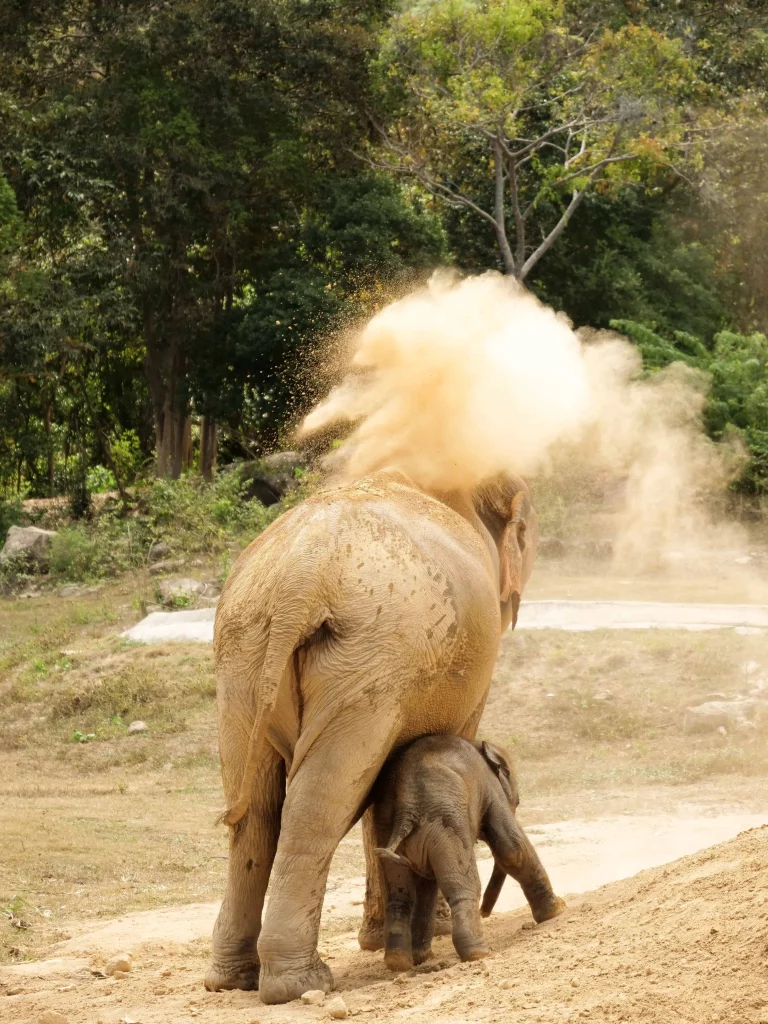
There is no animal on earth that can challenge or pose a threat to elephants. The only threat to them is humans. Accordingly, the biggest threat to the population of this species is the loss of their forest habitats due to the clearing of forests for agricultural development in the country and the spread of human settlements across the island.
Sri Lankan elephants are known to love crops and fruits grown by humans, such as sugarcane or bananas. Due to this factor, elephants are becoming extinct along with massive deforestation. As a result of this conflicts between humans and elephants occur and eventually, destruction of property as well as deaths occur on both sides. It is these animals that suffer the most damage and the population in the wild decreases by 6% every year. Accordingly, Sri Lanka has become the country with the highest number of elephant deaths per year.
Domestication
Elephant domestication in Sri Lanka has a very long history. Since the time of the Sinhalese kings, these animals have been kept for military purposes as well as to show their power. Over time, the tradition of taming elephants was carried on by the Portuguese and the Dutch and even today these animals are kept privately for various purposes such as logging, construction, tourism, festivals, or temple work. The government has issued licenses for that.
Cultural and symbolism
Sri Lankan elephants have been a common feature of Sinhalese and Sri Lankan Tamil culture for over two thousand years and continued to be so during British colonial rule.
That’s how much they have bouned with Sri Lankan people’s lives. From 1875 to 1948 an elephant was included in the emblem and flag of the Government of Sri Lanka and even today many institutions use the Sri Lanka elephant for their logos. Some Sri Lankan currency notes even feature elephants.
An important cultural coexistence between elephants and humans has existed for more than two thousand years – no religious procession is complete without elephants. many of Sri Lanka’s great Buddhist temples and Hindu temples have their own elephants.
Conservation
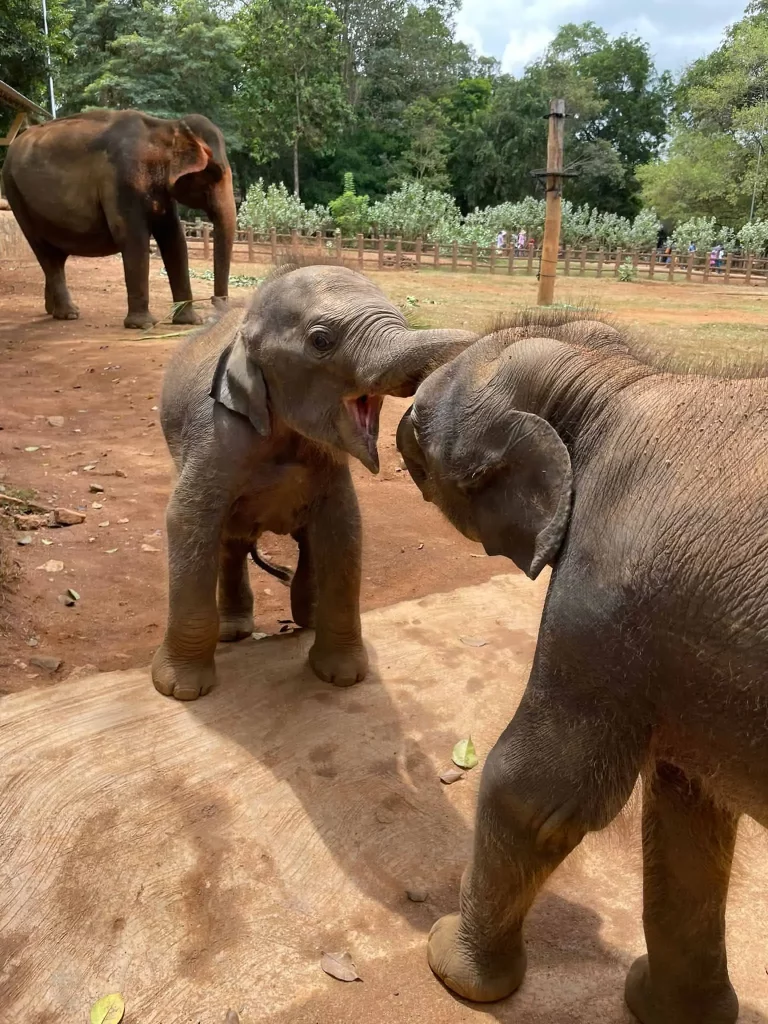
The primary objective of Sri Lanka’s Wildlife Conservation Department’s elephant conservation strategy is to conserve as many viable populations as possible in a range of suitable habitats. This means protecting elephants within the protected area system and protecting as many animals outside of these areas as the land can support and the landowners accept. This does not mean confining elephants to the network of protected areas.
Sri Lankan elephant orphanages and breeding centers are also run with the support of the Sri Lankan government. The Pinnawala Elephant Orphanage is one such center where injured elephants are treated and orphaned baby elephants are cared for. Around 70 elephants live here. Sri Lankan elephant breeding is also carried out and on a recent day, twin baby elephants were born here.
The Udawalawa Elephant Transition Home in the Udawalawa National Park acts as a rehabilitation center where orphaned elephant calves are kept and rehabilitated until they are released into the wild.
How did Sri Lanka get elephants?
Scientists have confirmed that there was a land bridge between Sri Lanka and India thousands of years ago. Accordingly, it is believed that the first herd of elephants crossed the sea. However, it is believed that these animals became isolated on the island after moving away from the land connection.
What are the differences between Indian and Sri Lankan elephants?
As a subspecies of an Asian elephant, there are no major differences between the Indian elephant and Sri Lankan elephant. But the Sri Lankan is bigger and taller than the Indian. And Sri Lankan is also the darkest in color than other subspecies
How many elephants are left in Sri Lanka?
An annual census of elephants in Sri Lanka is conducted by the Department of Wildlife. According to the reports, there are only 5500 of this animal species left in the country today.
Can Elephants Swim?
The short answer to this question is yes. elephants use their trunks as natural snorkels. They also have a unique lung structure among mammals that allows them to withstand pressure differences above and below water. Thus, biologists speculate that elephants may have swum to Sri Lanka by sea.
Five years ago Sri Lankan navy found a swimming Elephant 16 km away at the sea – Here is that Story
Swimming trunk: elephant rescued from the ocean 10 miles off Sri Lanka coast –The Guardian news
Elephant found swimming 16km out to sea — BBC News
Where can You see elephants swim in Sri Lanka?
Nowadays, one of the best places to see elephants swimming is the Gal Oya Reservoir which belongs to the Gal Oya National Park. In the morning, you can see elephants swimming to the islands in the reservoir and also swimming across the reservoir to the other side. Elephants can also be seen swimming through Polonnaruwa Parakrama Samudra Lake
How do elephants walk without making noise?
Elephants usually walk using their toes. When you look at the bone structure of their foot, the toes are lower than the heels. This arrangement is similar to high heels worn by women. The lower part of this structure is made up of a layer of fat that acts as a cushion. Because of this, they can carry their body and walk silently
What elephant musth is?
The signal that an elephant is ready for sex is called elephant musth. In such a case, the small glands near the ears of those animals will release brown fluid. The fluid is similar to the smell of coffee.
This musth period lasts for approximately two months and during this period the elephants become very restless.
How to identify a musth elephant?
During musth, fluid can be seen pouring from a small hole near the elephant’s ear. This solution wets a large area around the ear, and in some cases, it can be seen spilling up to the mouth. And animals are very violent during this time
Best Places to see wild elephants In Sri Lanka?
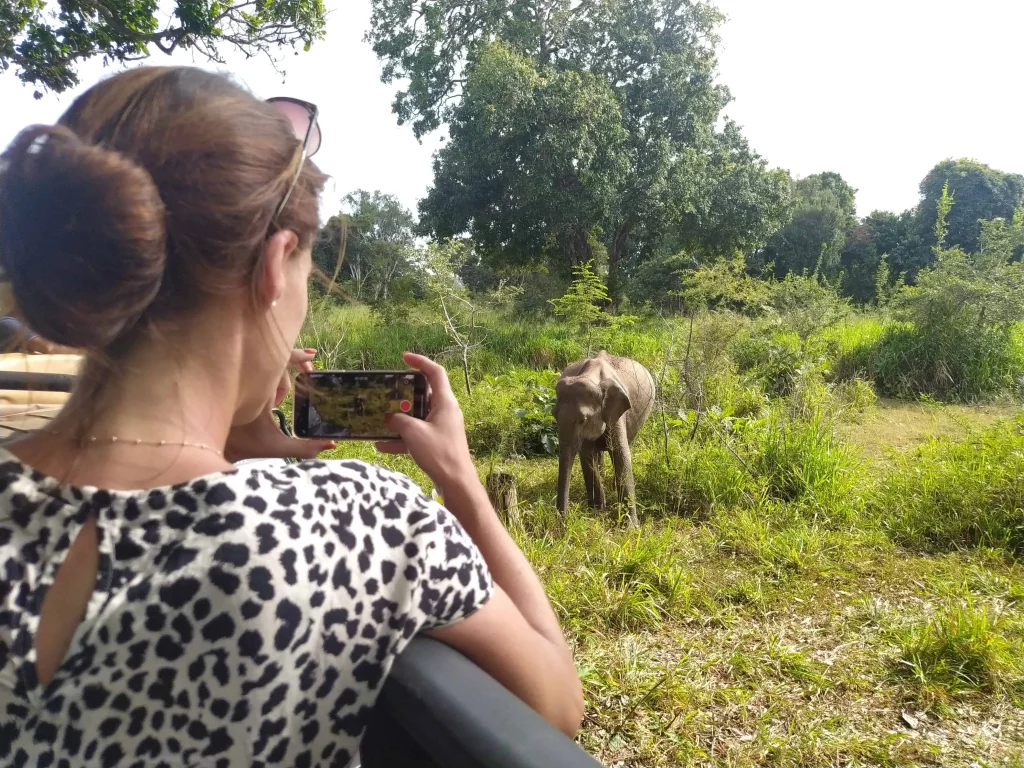
The best place to see wild elephants in Sri Lanka is Minneriya National Park. Kaudulla and Udawalawa National Parks are also more suitable. Although this species can be seen in other national parks, it is quite difficult to see them in very large herds and very close up.
Sri Lanka Elephants Orphanages
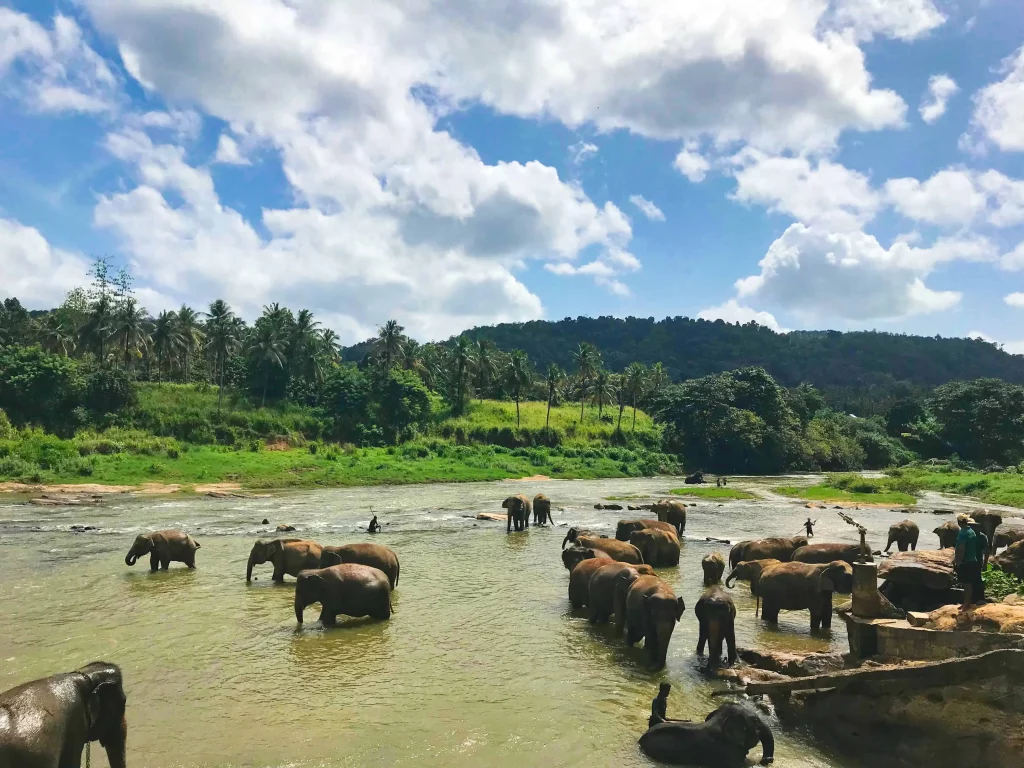
Two Sri Lankan elephant orphanages are run under the auspices of the Government of Sri Lanka and the Wildlife Department. Among these, the largest orphanage is Pinnawala Elephant Orphanage and the other is Udawalawa Elephant Transit Home. Pinnawala Orphanage primarily functions as an elephant conservancy and captive breeding station. In these places, they provide the highest care for elephants and small calves lost in the wild, injured elephants, and animals affected by diseases.
Udawalawa Transit Home acts as a shelter that takes care of lost elephant calves in the jungle and those who are injured in the forest. After the rehabilitation process, they back into the forest. Here, the small Sri Lankan elephant cubs are given milk and food and after they grow up, they are allowed to become wild.
Conclusion
The Sri Lankan elephant is not just an icon; it’s a symbol of the island’s natural beauty, culture, and the need for conservation. These magnificent creatures deserve our protection, and understanding their place in Sri Lanka’s rich tapestry is the first step towards safeguarding their future.
Frequently Asked Questions
- Are Sri Lankan elephants different from African elephants?
Sri Lankan elephants are a subspecies of the Asian elephant and differ in terms of size and certain physical characteristics from their African counterparts.
- What is the significance of elephants in Sri Lankan Buddhism?
Elephants hold immense significance in Sri Lankan Buddhism, representing virtue, wisdom, and a symbol of Lord Buddha’s teachings.
- How can I support elephant conservation efforts as a tourist?
Tourists can support conservation by choosing ethical elephant encounters, visiting responsible sanctuaries, and donating to recognized conservation organizations.
- What are the main threats to the elephant population in Sri Lanka?
The primary threats include habitat loss, poaching, and human-elephant conflicts, which are escalating due to human encroachment into elephant territory.
- Are there any successful stories of elephant conservation in Sri Lanka?
Yes, there have been several successful conservation initiatives, such as the Elephant Transit Home and the Uda Walawe National Park, which have contributed to the protection of these magnificent creatures.

